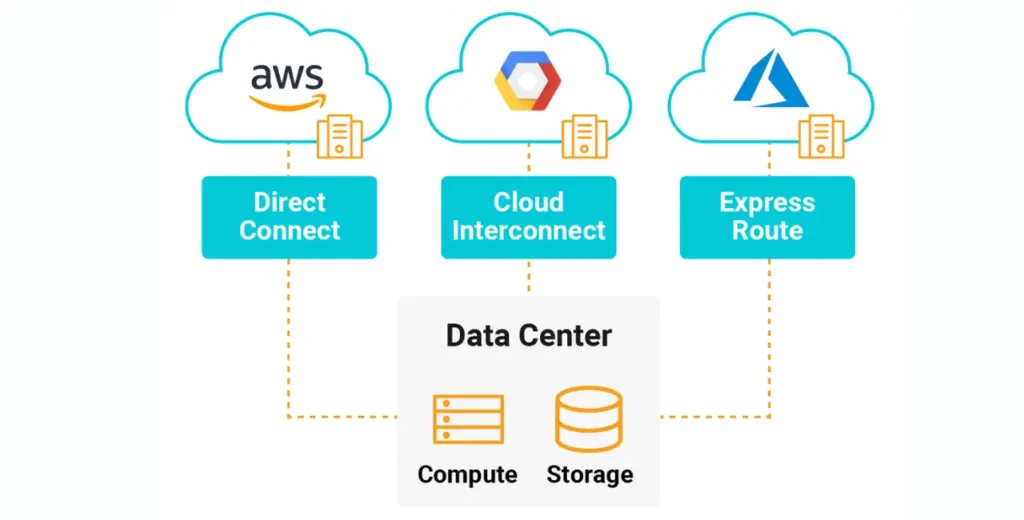Introduction
In today’s rapidly evolving technological landscape, businesses are constantly seeking ways to optimize their operations, and one such avenue is through multi-cloud architecture. This article will delve into the significance, benefits, challenges, and best practices of diversifying in the cloud age, focusing on multi-cloud architecture as a strategic approach.
Understanding Multi-Cloud Architecture

In the digital era, multi-cloud architecture has emerged as a game-changer for organizations, offering unparalleled flexibility and resilience. This section will elucidate the concept of multi-cloud architecture, its components, and how it differs from other cloud deployment models.
What is Multi-Cloud Architecture?
Multi-cloud architecture refers to the strategic utilization of multiple cloud computing services from different providers. It involves distributing workloads across various cloud environments to mitigate risks and optimize performance.
Components of Multi-Cloud Architecture
Delve into the core components of multi-cloud architecture, including public clouds, private clouds, hybrid clouds, and edge computing. Explore how each component contributes to the overall architecture’s robustness and scalability.
Advantages of Multi-Cloud Adoption
Embracing a multi-cloud approach offers numerous benefits for businesses looking to streamline operations and maximize resource utilization. This section will outline the advantages of adopting a multi-cloud strategy, from enhanced flexibility to cost optimization.
Enhanced Flexibility
Discuss how multi-cloud architecture enables organizations to select the most suitable cloud services for specific workloads, thereby fostering agility and adaptability in a dynamic business environment.
Improved Resilience
Explore the resilience aspect of multi-cloud architecture, highlighting how distributing workloads across multiple cloud platforms mitigates the risk of downtime and ensures business continuity.
Challenges of Multi-Cloud Implementation
While multi-cloud architecture offers compelling advantages, it also presents several challenges that organizations must address to reap its full benefits. This section will delve into the key challenges associated with multi-cloud implementation and strategies for overcoming them.
Complexity Management
Examine the complexities involved in managing multiple cloud environments, including interoperability issues, data integration challenges, and the need for robust governance frameworks.
Security and Compliance
Discuss the security and compliance considerations inherent in multi-cloud architecture, emphasizing the importance of implementing robust security measures and adhering to regulatory requirements across all cloud platforms.
Best Practices for Multi-Cloud Success

To harness the full potential of multi-cloud architecture, organizations must adopt best practices tailored to their unique requirements. This section will elucidate essential strategies for ensuring success in multi-cloud adoption, from thorough planning to ongoing optimization.
Comprehensive Planning
Highlight the significance of comprehensive planning in multi-cloud adoption, emphasizing the need for assessing workload requirements, evaluating provider capabilities, and devising a cohesive migration strategy.
Continuous Optimization
Explore the importance of continuous optimization in multi-cloud environments, advocating for regular performance monitoring, resource utilization analysis, and optimization efforts to enhance efficiency and cost-effectiveness.
FAQs
How does multi-cloud architecture differ from hybrid cloud?
Multi-cloud architecture involves using multiple cloud services from different providers, while hybrid cloud combines public and private cloud environments within a single architecture.
What are the primary considerations when selecting cloud providers for multi-cloud deployment?
When selecting cloud providers for multi-cloud deployment, organizations should consider factors such as performance, security, compliance, cost, and interoperability.
Is data migration challenging in a multi-cloud environment?
Data migration in a multi-cloud environment can be complex due to differences in data formats, storage architectures, and network configurations. However, thorough planning and robust migration tools can streamline the process.
How can organizations ensure data security across multiple cloud platforms?
Organizations can ensure data security across multiple cloud platforms by implementing encryption, access controls, identity management solutions, and regular security audits.
What role does edge computing play in multi-cloud architecture?
Edge computing complements multi-cloud architecture by enabling data processing and analysis closer to the source, thereby reducing latency and enhancing performance for edge devices and applications.
How can organizations optimize costs in a multi-cloud environment?
Organizations can optimize costs in a multi-cloud environment by leveraging cloud cost management tools, rightsizing resources, implementing workload automation, and adopting a pay-as-you-go pricing model.
Conclusion
Diversifying in the cloud age through multi-cloud architecture offers unparalleled opportunities for businesses to enhance agility, resilience, and efficiency in an increasingly digital world. By understanding the nuances, embracing best practices, and addressing challenges proactively, organizations can unlock the full potential of multi-cloud adoption.
Read More Blog…

